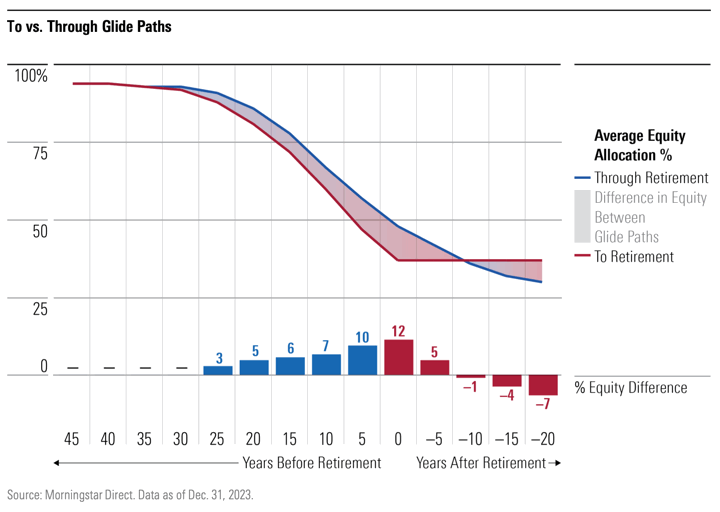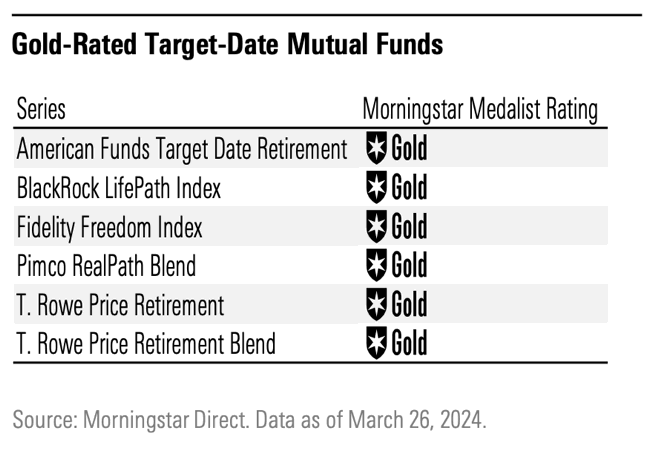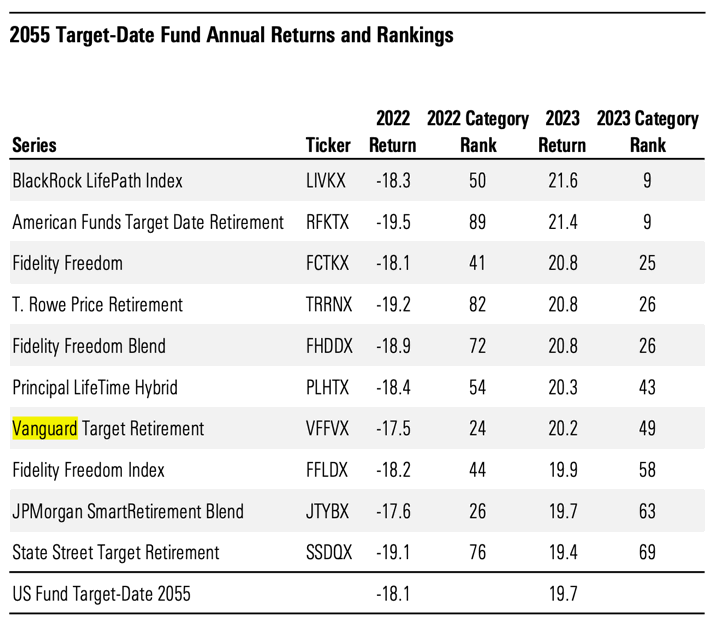Morningstar recently released its 2024 Target-Date Strategy Landscape Report (free download with e-mail address). This is mostly targeted at industry professionals as opposed to individual investors, but I still like to read through it each year. Here are a few selected charts and quick takeaways from the report.
Our annual report on target-date strategies delves into the landscape by analyzing target-date flows, asset composition, fees, strategy performance, and more.
Average Asset Allocation Glide Paths. I always like to look at the average asset allocation glide path across all of the different TDFs. Morningstar now separates the them into “To Retirement” and “Through Retirement” types, depending on if they stop changing right at the retirement date or not. On average, most TDFs have an asset allocation close to 90% equity and 10% bonds in the early years, with the equity percentage dropping (and bond percentage rising) as time goes on. At the year of retirement, the average asset allocation is roughly 40% to 50% equity.

Here are all of the TDFs rated Gold by Morningstar. Vanguard, which is the largest by asset size, was rated Silver. Morningstar didn’t really explain very clearly why Vanguard only got Silver alongside some pretty mediocre funds like the original Fidelity Freedom series (not Freedom Index).

But really, the most important factor is whether you are invested and “in the game” or not. The differences between different TDFs are relatively small these days. Most of us can’t change the TDF series that is offered in our 401k plan. We can’t control the returns of those TDFs, either.
Here is a comparison of the returns from 2055 Target Date Funds (younger investors that have 30 years until retirement). I don’t see a huge dispersion in the returns. Higher is always preferred of course, but the same TDF that had returns ranked 89th one year was then ranked 9th the next year.

Here is a comparison of the returns from 2025 Target Date Funds (older investors very close to retirement). The same TDF that had returns ranked 83rd one year was ranked 11th the next year.

I remain a fan of TDFs in general. Most are good nowadays. As DIY investors, the most important decision is to participate in the stock market returns and try to maximize our contributions. The rest is much less important. Over the long run, TDFs have created a lot of wealth for consistent savers.
 The Best Credit Card Bonus Offers – 2025
The Best Credit Card Bonus Offers – 2025 Big List of Free Stocks from Brokerage Apps
Big List of Free Stocks from Brokerage Apps Best Interest Rates on Cash - 2025
Best Interest Rates on Cash - 2025 Free Credit Scores x 3 + Free Credit Monitoring
Free Credit Scores x 3 + Free Credit Monitoring Best No Fee 0% APR Balance Transfer Offers
Best No Fee 0% APR Balance Transfer Offers Little-Known Cellular Data Plans That Can Save Big Money
Little-Known Cellular Data Plans That Can Save Big Money How To Haggle Your Cable or Direct TV Bill
How To Haggle Your Cable or Direct TV Bill Big List of Free Consumer Data Reports (Credit, Rent, Work)
Big List of Free Consumer Data Reports (Credit, Rent, Work)
I will never understand why a TDF is obsessed with asset allocation and reducing the equity component for such a high fixed income percentage as time goes on. Shouldn’t valuation of the assets matter more than the type of asset? If you really only plan on a 3% withdrawal rate, why focus on lowering volatility so much?